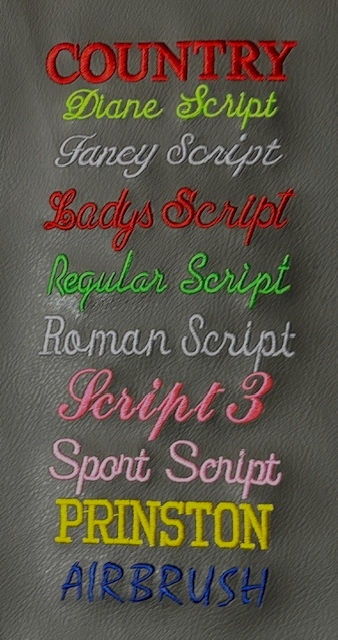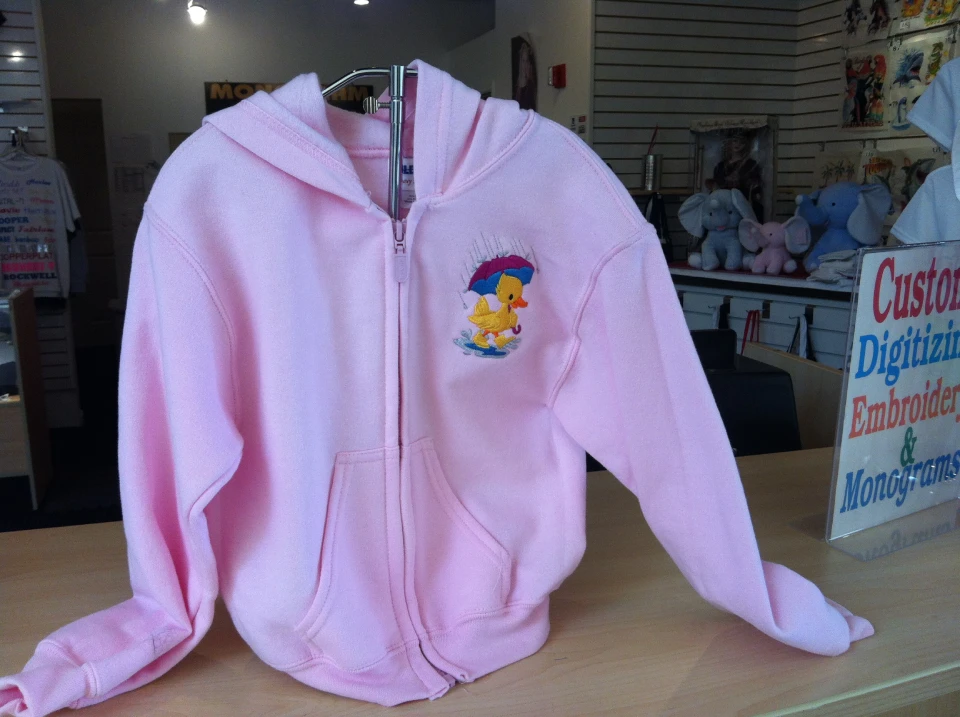The Art of Customized Embroidery: Opening the Secrets to Creating Unique and Unforgettable Layouts
Embroidery, a craft steeped in practice and creativity, holds within its intricate stitches the power to change textile right into a canvas of unique expression. The keys to developing custom-made needlework designs that mesmerize the eye and leave an enduring impression hinge on a fragile equilibrium of technique, creative thinking, and attention to detail. As we explore the globe of custom embroidery, we reveal the nuanced interplay in between thread choice, stitch intricacy, and design personalization that raises a plain garment to a masterpiece. Join us on a journey with the art of custom-made needlework as we untangle the mysteries behind crafting genuinely remarkable and unique developments.
Choosing the Right Embroidery Threads
When picking embroidery strings, what essential elements should you consider to make sure the most effective outcomes for your customized layouts? The selection of embroidery thread is vital in figuring out the final outcome of your embroidered style. One of the key considerations is the material of the string. Various materials such as cotton, polyester, rayon, and silk provide differing levels of sheen, toughness, and texture. It is necessary to pick a thread product that enhances the material you are embroidering on and lines up with the preferred look of the layout.
Thicker strings can include measurement and structure to your style, while finer strings are perfect for complex information and small text. In addition, considering the color fastness and washability of the thread is vital to make certain that your customized layouts preserve their top quality and vibrancy over time.
Discovering Different Stitch Techniques
To dive into the realm of 'Exploring Various Stitch Methods', one must realize the complexities and subtleties that each stitching technique gives the art of embroidery. Various stitch strategies not just add visual interest but additionally add to the total appearance and measurement of the design. One popular stitch technique is the satin stitch, which involves carefully jam-packed parallel stitches to produce a smooth and shiny surface area, suitable for filling out forms and developing vibrant lays out.
On the various other hand, the backstitch is a functional method frequently used for outlining and including fine details. It involves sewing in reverse to produce a strong line of needlework. Furthermore, the French knot stitch adds a tactile aspect to styles, perfect for developing textured accents like flower facilities or ornamental touches.
Exploring various stitch methods allows embroiderers to have fun with light, darkness, and depth within their designs, raising the aesthetic allure and artistic top quality of their embroidery projects. By understanding different stitching approaches, one can open countless possibilities for creating one-of-a-kind and memorable personalized embroidery items.
Incorporating Personalized Design Components
Having actually checked out the details of various stitch techniques such as the satin stitch, backstitch, and French knot, the focus now moves towards incorporating tailored design components in personalized embroidery jobs. Customized layout components play an important function in making needlework jobs absolutely unique and memorable.
An additional way to include tailored design elements is by including signs or themes that hold unique definition to the recipient or mirror their passions and individuality. Including a preferred flower, animal, or hobby-related symbol can make the embroidery design extra significant and customized. Additionally, picking shades that resonate with the recipient or align with the desired style can further boost the customization of the embroidery project.
Mastering the Art of Shade Control

One key element of color control is recognizing shade theory. This consists of understanding how various shades engage with each various other, the emotions they communicate, and how they can be integrated to create visually enticing layouts. By applying color concept concepts, embroiderers can develop harmonious shade combinations that enhance the total appearance of the style.
Additionally, focusing on contrast is crucial in shade coordination. Utilizing contrasting shades can assist certain aspects of the style pop, boost legibility, and produce an aesthetically vibrant embroidery piece. By understanding the art of shade coordination, embroiderers can raise their layouts and develop unforgettable pieces that reverberate with customers and customers alike.
Enhancing Texture With Advanced Embroidery Stitches

French knots, for instance, are ideal for including small, elevated dots to your style, resembling the appearance of grains or developing a textured surface. Bullion knots, on the various other hand, can be used to develop twisted, ropelike aspects that include an extravagant feel to the embroidery. Seed stitching includes little, scattered stitches that can fill out areas with a speckled appearance, while turkey work creates cosy, dimensional accents similar to animal fur or foliage. Explore these innovative needlework stitches enables you to press the borders of standard embroidery and create genuinely unique and Learn More Here visually attractive textures in your styles.
Final Thought
Finally, the art of personalized embroidery involves a mix of choosing the appropriate threads, exploring numerous stitch methods, including tailored style elements, understanding color control, and improving texture with sophisticated stitches. By understanding and applying these crucial elements, embroiderers can produce unique and remarkable designs that showcase their imagination and ability. Embroidery lovers can unlock the secrets to creating beautiful and More Info bespoke items that attract attention and leave a long-term impact.